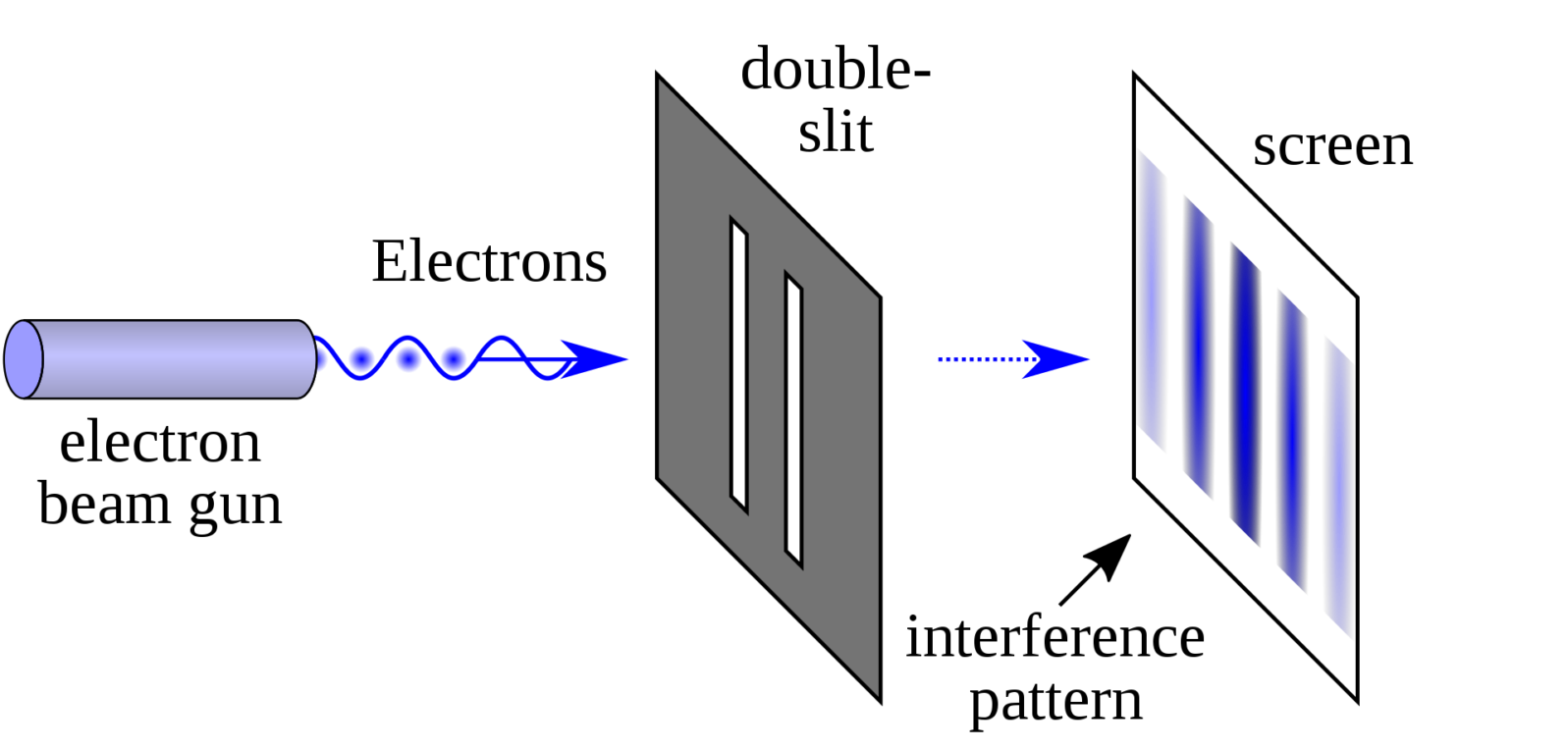Here’s Why the Quantum World Is Just So Strange
It underlies our universe but it follows its own “rules,” which don’t make sense to the rest of usIn this week’s podcast, “Enrique Blair on quantum computing,” Walter Bradley Center director Robert J. Marks talks with fellow computer engineer Enrique Blair about why Quantum mechanics pioneer Niels Bohr said, “If quantum mechanics hasn’t profoundly shocked you, you haven’t understood it yet.” Let’s look at some of the reasons he said that:
The Show Notes and transcript follow.
Enrique Blair: It’s really quite different from our daily experience. Quantum mechanics really is a description of the world at the microscopic scale. And it’s really weird, because there are things that initially we thought maybe were particles but then we learned that they have wave-like behaviors. And there are other things that we thought were waves and then we discovered they have particle-like behaviors.
But that’s hardly the strangest part. The strangest part is that a quantum particle does not actually have a position until we measure it, according to the generally accepted Copenhagen interpretation of quantum mechanics.
Robert J. Marks: What’s the Copenhagen interpretation?

Enrique Blair (pictured): It’s that the quantum mechanical wave function describes measurement outcomes in probabilities. You can’t predict with certainty the outcome of a measurement. Which is really shocking, because in the classical world, if you have a particle and you know its position and its velocity, you can predict where it’s going to be in the next second or minute or hour. Now in quantum mechanics, the really weird thing is, we say that a particle doesn’t even have a position until you measure its position.
Robert J. Marks: It doesn’t exist?
Enrique Blair: Not that it doesn’t exist, but its position is not defined.
Dr. Marks compared quantum mechanics (QM) to one of the characters in a 1999 film, Mystery Men, featuring inept amateur superheroes, including one who says, “I’m invisible as long as nobody’s looking at me.” With QM, that’s not a joke. The quantum particle doesn’t have a position until we measure it. But how did we discover this? The story goes back to the early 1800s when British physicist Thomas Young (1773–1829) did a famous experiment with a card held up to a small window…
Enrique Blair: Young’s double-slit experiment goes all the way back to 1801, where Young shot light at a couple of slits and then the light passing through the slits would show up on a screen behind them.
So light behaves like a wave, with interference patterns. But what happens when we try doing the same thing with a single particle of light—a photon? That’s something we can do nowadays.
Enrique Blair: We can reduce a beam of light so that it’s single photon. One photon is emitted at a time, and we’re shooting it at our double slit again.
What happens when each particle of light goes through these slits? Well, each particle splats up against this screen, and so you can know where the photon hits. But if you do this over a long period of time, the interference pattern shows up again. You have particles hitting the screen, so we see the particle behavior. But we also see the interference pattern which suggests that okay, we’ve got some wave interference going on here.
So the only way to explain both of these at the same time is that each photon, which is an indivisible packet of light, has to go through both slits at the same time and interfere with itself, and then the buildup of many, many photons gives you that interference pattern.
Robert J. Marks: A particle was hypothesized to go through both slits?
Enrique Blair: Yes, and that’s the mind-blowing ramification of this thing.

Robert J. Marks: How do we decide which slit the particles go through? Suppose we went down and we tried to measure? We put out one photon and we put it through the double slit. We’ve tried to measure which slit it went through. If it’s a particle, it can only go through one, right?
Enrique Blair: Right. That introduces this concept of measurement. Like you said, which slit does it go through? Now the interesting thing is, if we know which slit it goes through… maybe we set up a detector and we say, “Hey, did it go through Slit One or Slit Two?”… we detect that, we measure it— and the interference pattern goes away because now it’s gone through one slit only, not both.
Robert J. Marks: Just by the act of observation, we are restricting that photon to go through one slit or the other. Observation really kind of screws things up.
Enrique Blair: That’s right. This is one of the things that is hard to understand about quantum mechanics. In the classical world that we deal with every day, we can just observe something and we don’t have to interact with it. So we can measure something’s position or its velocity without altering it. But in quantum mechanics, observation or measurement inherently includes interacting with that thing, that particle.
Again, you’ve got this photon that goes through both slits, but then you measure it and it actually ends up going through one—once you measure it.
Robert J. Marks: This reminds me again of Invisible Boy in Mystery Men. The photon goes through one of the two slits while you’re looking at it. Unless you look away. Then it goes through both slits.
Enrique Blair: Right. Very tricky, those photons.
Next: How scientists have learned to work with the quantum world
Note: The illustration of the “double-slit experiment” in physics is courtesy NekoJaNekoJa and Johannes Kalliauer (CC BY-SA 4.0).
You may also enjoy: A materialist gives up on determinism. Evolutionary biologist Jerry Coyne undercuts his own argument against free will by admitting that quantum phenomena are real (Michael Egnor)
Quantum randomness gives nature free will. Whether or not quantum randomness explains how our brains work, it may help us create unbreakable encryption codes (Robert J. Marks)
Show Notes
- 00:54 | Introducing Dr. Enrique Blair, a professor of electrical and computer engineering at Baylor University
- 03:08 | The history of quantum mechanics
- 13:16 | Quantum superposition
- 21:50 | Schrödinger’s cat
- 27:45 | Why didn’t Einstein like quantum mechanics?
- 28:51 | Quantum entanglement
- 32:58 | Applications of quantum mechanics
- 34:53 | Quantum dots
- 37:31 | Quantum computing
- 43:48 | The use of quantum computers
- 47:55 | Quantum supremacy
- 55:32 | Quantum communication
- 58:47 | The future of quantum computing
Additional Resources
- Enrique Blair’s website
- Copenhagen Interpretation of Quantum Mechanics at Standford Encyclopedia of Philosophy
- Young’s double-slit experiment at Encyclopædia Britannica
- Planck’s explanation of black-body radiation at Encyclopædia Britannica
- Quantum superposition at Wikipedia
- Nobel Prize in Physics 1932 — Werner Heisenberg
- Nobel Prize in Physics 1933 — Erwin Schrödinger
- Many-Worlds Interpretation of Quantum Mechanics at Stanford Encyclopedia of Philosophy
- Schrödinger’s cat at Wikipedia
- Quantum entanglement at Wikipedia
- Quantum bit (qubit) at Wikipedia
- Quantum dots at Wikipedia
- Shor’s algorithm at Wikipedia
- RSA at Wikipedia
- Grover’s algorithm at Wikipedia
- Quantum supremacy at Wikipedia
- IBM on Google’s claim of quantum supremacy
- Quantum communication at MIT Technology Review
- Adiabatic quantum computation at Wikipedia
